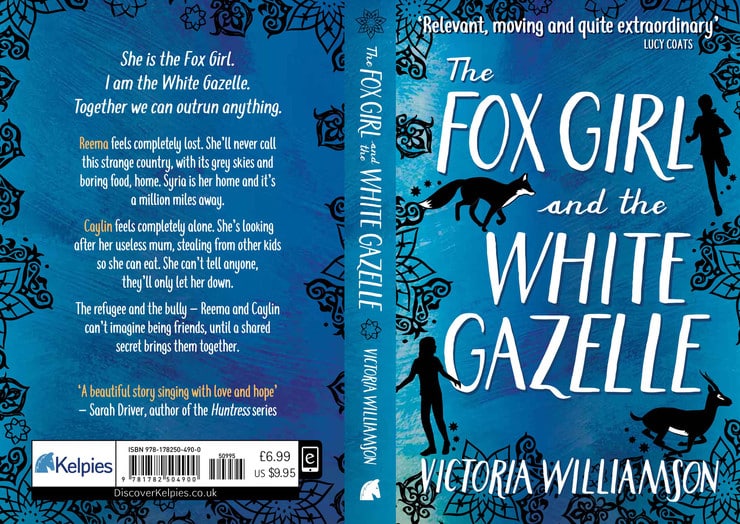BooksforTopics Reading for Pleasure Recommendations


Book Title: The Fox Girl and the White Gazelle
Author: Victoria Williamson
Publisher: Kelpies
Publication Date: April 2018
Most Suitable For: Years 5-6
“Every refugee has a story to tell. This is Reema’s.”
Author Victoria Williamson is an experienced primary teacher who has seen first hand the difficulties faced by child refugees resettling in the UK. Her debut novel, The Fox Girl and the White Gazelle, is in part inspired by her own experiences of teaching very young refugees in Glasgow and the story is a compelling and compassionate recount of one girl’s resettlement and an unlikely friendship with a troubled neighbour.
Reema is a twelve-year-old refugee who has been forced to flee Syria with her family and has moved to Scotland. As Reema tries to settle into her council flat, she misses the familiarity of home, struggles with traumatic memories of war torn Syria and is plagued with worry about what might have happened to her missing older brother.
Another girl from Reema’s new class at school lives in the same block of flats. Caylin is feisty, unpopular and insecure. She aggressively bullies other children while secretly struggling to cope with her mother’s alcohol addiction and mental health issues that have spiralled out of control since the death of Caylin’s grandfather.
The narrative unfolds with chapters alternating between the two girls’ perspectives. Initially the pair feel like they are worlds apart and that friendship is out of the question. Slowly, as the girls work together to nurture an injured fox found near their homes, they begin to see that they have more in common than they thought and a friendship steadily blossoms.
The portrayal and development of the two main characters at the heart of the book is triumphant and engaging. Each girl has very believable insecurities, flaws and desires that are drawn out in the narrative with deep compassion without any hint of stereotyping. Part of Reema’s struggle to give her new home a chance stems from her inability to see how she can assimilate into a Scottish culture that feels so unimaginably different from her beloved home; “even the trees speak a different language,” she muses. While anger-filled Caylin is seen stealing her classmate’s birthday money and hurting children from younger classes, she is portrayed as being deeply lonely and insecure, partly because of a speech impediment but mostly because she is steeped with worry about social services finding out that she is left to fend for herself while her mother tries to recover from an abusive relationship and an alcohol addition. It is almost impossible to read these accounts without developing the utmost empathy for Reema and Caylin and rooting for them to help each other belong.
The Fox Girl and the White Gazelle is an important story addressing topical issues and hugely relevant themes of overcoming difference, learning to trust and connecting to others in the face of hopelessness. Both Reema and Caylin have stories that need to be heard and the book is an essential addition to primary libraries and upper KS2 classrooms.
Look out for Victoria’s guest blog post later this week, in which she suggests an activity for teaching about the topic of refugees in the primary classroom.

—————–
Find The Fox Girl and the White Gazelle online or from your local bookshop or library.
20% of proceeds from the book’s sales are being donated to the Scottish Refugee Council.
Many thanks to the publisher for kindly sending me a review copy of this book.









